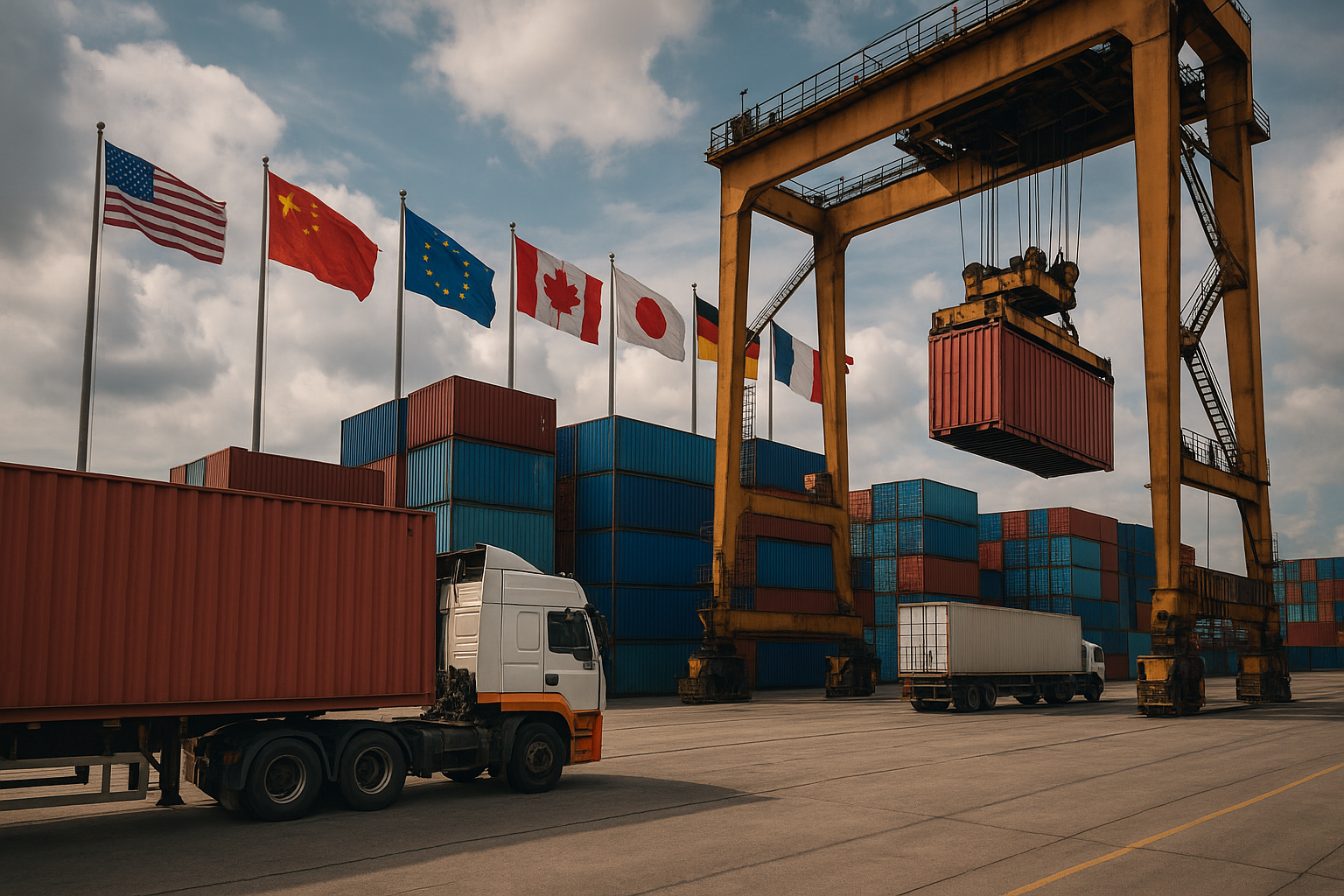Invisible Barriers: The Rise of Non-Tariff Measures in a Fragmented World Economy
The World Bank’s paper “It’s Not (Just) the Tariffs” reveals that non-tariff measures, such as standards, licenses, and bans have replaced tariffs as the main forces shaping global trade. It warns that while NTMs can advance safety and sustainability, poor design risks deepening inequality and exclusion in world markets.

A new World Bank Policy Research Working Paper titled "It's Not (Just) the Tariffs: Rethinking Non-Tariff Measures in a Fragmented Global Economy", authored by Daria Taglioni and Hiau Looi Kee of the World Bank's Development Research Group, reshapes the global trade conversation. Produced under the Bank's Development Economics Vice Presidency with support from the Umbrella Facility for Trade, UNCTAD, and the OECD, the paper argues that non-tariff measures (NTMs) have overtaken tariffs as the most powerful forces shaping world trade. Once tools of consumer protection and environmental safety, NTMs, ranging from product standards and sanitary regulations to licensing and export bans, now define who can participate in global markets.
The Invisible Walls of Global Commerce
While tariffs have fallen steadily over the past three decades due to liberalization, NTMs have multiplied. The paper shows that they now determine market access far more than traditional customs duties. Unlike tariffs, NTMs are embedded in regulations and certification procedures that are opaque, complex, and costly to comply with. They can exclude firms and countries not because of explicit discrimination but because of their limited ability to meet stringent standards. Using ad valorem equivalents (AVEs), tariff-equivalent measures developed through gravity-based estimation by Kee, Nicita, and Olarreaga (2009), the authors quantify how restrictive NTMs have become. The results are revealing: high-income countries rely more on NTMs than on tariffs, while developing nations still use tariffs heavily but face higher NTM barriers on their exports.
A New Geography of Trade Restrictiveness
Between 2018 and 2022, middle-income countries restricted imports through tariffs three times more than through NTMs, while high-income countries used both in nearly equal measure. The European Union maintained the world's lowest tariffs (1.6%) and NTMs (1.3%), Japan's rates hovered around 2.4%, and the United States registered NTMs (2.8%) that exceeded its tariffs (2.5%). In contrast, economies such as India, Brazil, and Pakistan recorded much higher restrictiveness overall. The asymmetry creates what the authors call "regulatory sorting," where exporters from lower-income nations are filtered out of heavily regulated markets. For instance, although India and the U.S. display similar unweighted NTM levels, Indian exporters face almost twenty times higher trade-weighted restrictiveness in the U.S. market. In low-income countries, high NTMs often suppress imports so completely that trade-weighted averages appear deceptively low, masking the barriers' true severity.
From Tariffs to Technical Standards
The study also captures a clear substitution of tariffs with NTMs in advanced economies. As tariff revenues declined, governments increasingly turned to NTMs to preserve regulatory control and pursue social or environmental goals. This trend is strongest among skill-rich and capital-intensive importers such as the EU, Japan, and the United States. Deep trade agreements have reinforced it by embedding high technical and safety standards. The paper contrasts the two instruments: tariffs are transparent, predictable, and fiscally significant; NTMs are opaque, difficult to enforce, and costly but offer greater policy flexibility. However, this shift intensifies fragmentation by layering regulatory requirements that few developing-country firms can satisfy.
Winners, Losers, and the Cost of Complexity
NTMs reinforce inequality in global trade through four interconnected channels. First, North–North consolidation, wealthy economies increasingly trade with one another, excluding weaker partners through high standards. Second, South–South reallocation, exporters in low- and middle-income countries divert trade toward less regulated partners. Third, firm concentration and exit, stringent NTMs drive smaller exporters out of markets. The paper cites Fernandes, Ferro, and Wilson (2019), who found that a 10% rise in NTM stringency reduces new exporters by 5.6% and increases firm exits by 4.2%. Finally, policy misfires occur when poorly designed NTMs harm productivity and welfare. Indonesia's nickel export ban encouraged inefficient entrants, Sri Lanka's fertilizer ban cut rice yields by 30%, and Colombia's non-automatic import licensing curbed trade without gains. By contrast, China's lenient NTMs for green-energy inputs helped its solar and wind sectors expand rapidly, proof that design and context determine whether NTMs enable or stifle development.
The Road to Smarter Regulation
The authors conclude that NTMs are now central to global trade governance and call for smarter, more inclusive management rather than elimination. They urge developing countries to strengthen testing, certification, and quality-infrastructure systems to meet technical barriers to trade (TBT) and sanitary and phytosanitary (SPS) standards. Integrating NTM metrics into trade diagnostics can reveal hidden restrictiveness and guide reform. Transparency is equally vital, through stronger WTO notifications, harmonized regional rules, and databases such as DAVE-NTM that express NTMs in tariff-equivalent terms. The paper also identifies four research priorities: updating AVE estimates regularly, examining firm-level effects on small enterprises, mapping NTM spillovers in key sectors, and studying the political economy of regulatory substitution. Ultimately, the authors argue, the future of globalization will not be decided by tariffs but by how the world designs, applies, and governs non-tariff measures. Done right, they can safeguard health, safety, and sustainability; done poorly, they risk turning open trade into an exclusive club.
- FIRST PUBLISHED IN:
- Devdiscourse
ALSO READ
-
World Bank Backs Kerala's Health Revolution with $400M Boost
-
Currency Movements Amidst Global Trade Talks and Central Bank Meetings
-
Trump's TikTok Diplomacy and Global Trade Standoff
-
WTO Forum Highlights CAREC Region’s Expanding Role in Global Trade Integration
-
New WTO-IMF Index Reveals Surge in Global Trade Policy Activity Since 2019









